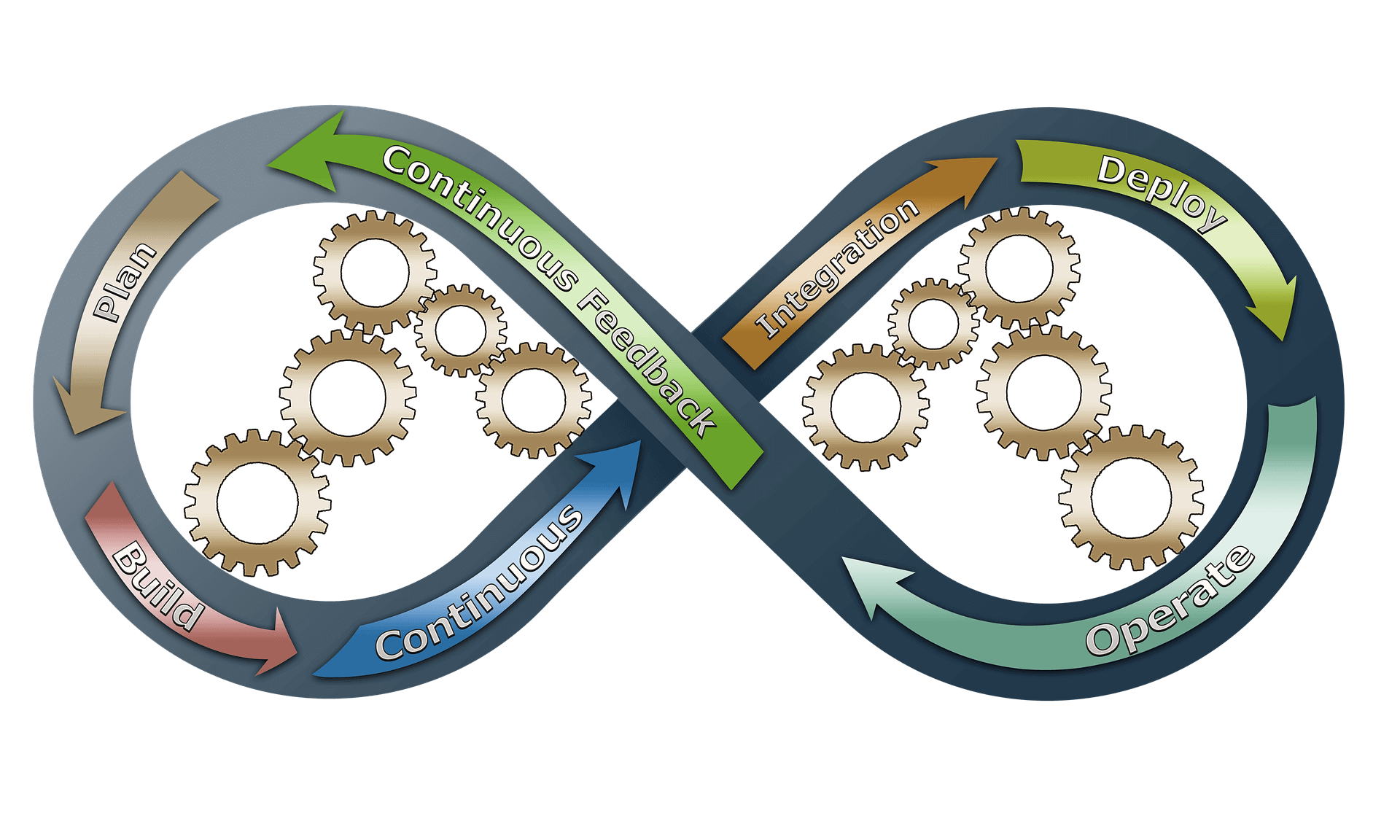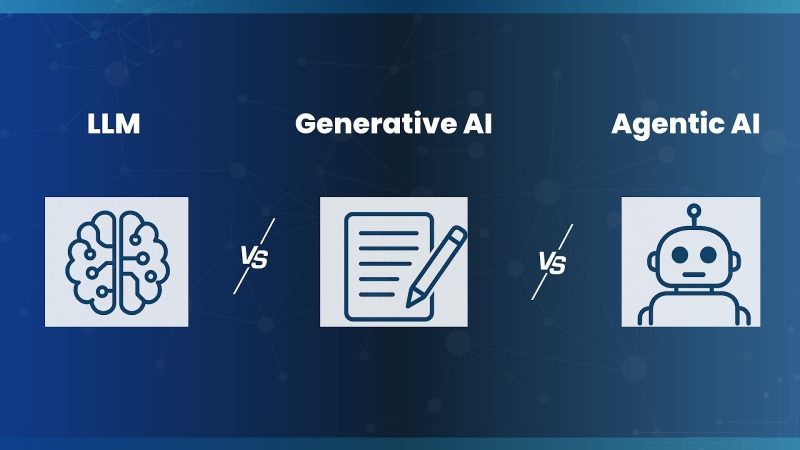Best DevOps Tools And Solutions In 2025

In this blog post, we will learn about DevOps, the principles of DevOps, the criteria for selecting the DevOps tools, and finally, the best DevOps tools are compared.
What is DevOps?
DevOps is a practice rather than a tool, and technologies are required to implement it. Today, most firms recognize a need to develop and deliver significant new code regularly; therefore, this software development model has become the mainstream. DevOps is a set of concepts, methods, and tools which aim to replace protracted product development cycles with a much more systematic process. The assumption is that by operating this way, this will be easier to respond to customer requests and market developments.
To assist this approach, software engineers & operations teams collaborate, with programmers taking on some activities traditionally given to other departments. Quality assurance and security teams collaborate extremely closely with engineers inside this architecture. Moreover, to attain a depth understanding of this platform, taking up the DevOps training is acceptable.
Principles of DevOps:
The main principles that made DevOps adoptable by their team are:
- Automation,
- Collarbaiton
- Continuous deployment
- Continuous improvement and
- Customer-centric action
Teams regularly deploy upgrades and new functionality and detect changes to ensure everything is working correctly. Another critical aspect of DevOps is infrastructure-as-code, which eliminates the need for regular infrastructure provisioning and makes it easier to make large-scale changes. IaC is a crucial component of the CI/CD process.
Business benefits of DevOps:
DevOps-enabled businesses have seen effective communications, greater efficiencies, better dependability and scalability, and cost reductions. Reduced deployments result in faster sequential phases and a better overall procedure. In addition, smaller batch quantities minimize the total hazard of installing new software.
Also Read: Saving DevOps Time and Energy: Unlock the Power of AWS Elastic Beanstalk
Criteria for selecting the right DevOps tool:
No single solution or vendor could have all of the features required to support a DevOps approach or pipeline. However, several key aspects to consider when selecting tools and technologies for your organizational requirements and DevOps objectives. These objectives are usually different depending on the company’s structure, operations, and environment.
There are a few things to consider while selecting the appropriate tools for every project. They are:
- One needs to check whether the tool operates effectively on the applications and infrastructure hosted around the cloud or hybrid environments.
- Make a note that the tool can integrate with the current development IDE tools or not.
- Check whether the tool can integrate with other DevOps pipeline integration technologies such as Github, selenium, Jira, Slack and testNG, etc.
- Ensure that the team could quickly learn and use the technology and that it can scale as your team’s eventually contributing and the company grows.
Best DevOps tools in 2025:
This section will go through the best DevOps tools list in 2025. They are:
Ansible:
Ansible was formerly an automated engine that could handle cloud provisioning, system integration, custom development, and intra-service orchestration. And it is a multi-tier deployment tool that can represent the entire IT infrastructure.
- Insert and remove machines from load balancers.
- Have a server recognize the IP addresses of all the others to use the data for creating a dynamic file system.
- Set specific parameters, inquire about others, and set the default for those that aren’t.
- Just use the output of one command to determine whether or not to execute another.
Any program which can generate JSON could be used for creating Ansible modules. There seem to be thousands of connectors and Python APIs enabling increasing Ansible’s access points, including Atlassian, AWS, Cisco, Google Cloud Platform, Splunk, VMware, and even Windows.
Azure DevOps:
This Microsoft solution includes versioning, monitoring, requirements analysis, project execution, automation builds, debugging, and deployment management features across the whole application development lifecycle. According to the firm, the system fosters a culture of collaboration and a set of processes that bring together developers, project managers, and users.
The software can be used in the cloud or locally. Clients could also choose from a variety of independent services or employ combined capabilities available throughout an internet browser or perhaps a comprehensive development ecosystem client:
- Repos: Using Git or Team Foundation repository for version control.
- Pipelines: Create and deploy processes for continual application integration & delivery.
- Boards: A set of rapid technologies for organizing and monitoring work, bugs, and issues using Kanban or Scrum methodologies.
- Manual or exploratory testing, as well as continuous testing, are examples of test plans.
- Artefacts: A platform for distributing packages via internal and external sources, like Maven, npm, NuGet, and many others, and product distribution into production pipelines.
Collaborative tools like configurable dashboards, constructed wikis, or customizable notifications are also included in DevOps. In contrast to completing outcomes following, the platform supports additional features and interfaces with some other services such as Campfire, Slack, and Trello.
Docker DevOps:
Docker is a popular containerization tool in paid and free versions, and Docker Engine hosts the containers. A container seems to be a software suite that encapsulates code with all its requirements, allowing a program to execute on any platform. An app’s code, runtime, system tools, system frameworks, and settings are all stored inside a Docker hub image.
The containers that operate on the DevOps platform are:
- Standard,
- Secure and
- Lightweight
Docker provides command-line interface extensions for companies to build, debug, and distribute containerized apps and applications. For programmers, Composing streamlines the software to cloud workflow and toolset, enabling the user to create a complicated architecture inside a single document and launch this with a unified program.
Develop images for numerous CPU and OS designs and share them in a private registry or on Docker Hub and Contextual makes switching among various Docker & Kubernetes settings simple. Docker Hub makes it simple to see images from different sources and sets up a complete CI/CD container process, including automatic builds and actions performed after every valid transfer towards the Docker Hub repository.
Also Read: What are The Roles of a Python Developer?
Jenkins:
Jenkins is indeed a Java-based free software CI/CD automation platform. As per the business, this system is particularly effective in managing applications and has over 200,000 confirmed installations. It is available for Windows, MacOS, Linux, and Docker containers. The program was self-contained & extensible through its plugin structure, which has over 1,800 components.
Jenkins does have a large consumer community to help folks who are new to the platform get started. Inside the network, sections are dedicated to coding, contacting new users, enhancing information, and adding to automation testing. Local gatherings and web meetings are for those enthusiastic about interacting with the other CI/CD customers and developers.
Jenkins even has a community-driven agenda that gathers and monitors activities across the board, covering functionality, architecture, reference, and communities.
Jira:
Jira began as a defect tracker, but it has since grown to handle many tasks, from requirements and technical scenarios to agile software. And it is the foundation of Atlassian’s free unified toolchain, Free DevOps. Bitbucket, GitHub, GitLab, Confluence, & Opsgenie are among the first and 3rd party technologies Jira connects with.
Jira’s DevOps platform could efficiently work across various platforms and deliver real-time progress reports. In addition, the framework includes roadmap criteria.
Jira interfaces with Hipchat, Slack, and various other third-party tools. It’s pretty adaptable and suitable both for technology and enterprise customers.
Kubernetes:
Kubernetes acts as a unique open-source container orchestration system for automating the deployment, scaling, and administration of computer applications. it additionally makes it easier to manage infrastructure services for apps & helps developers design decentralized apps. In 2014, Google made the Kubernetes technology open source.
Also Read: Why It’s Significant for Every Developer to Be Familiar with DevOps Best Practices?
DevOps experts can use Kubernetes to:
- Containerized apps can be deployed rapidly and reliably.
- Containerized apps can be scaled on the go, and additional innovations can be added.
- Hardware should be optimized especially for container orchestration.
The Kubernetes cluster comprises nodes, which are working systems that execute containerized apps. The employee node contains pods which reflect the advanced method components. The central controller oversees the cluster’s working nodes, including pods. Kubernetes also supports the following list of members. They are:
- Services
- API server
- Labels and selectors
- Controller manager
- Scheduler
- Kubler
- Kube proxy
- cAdvisor






